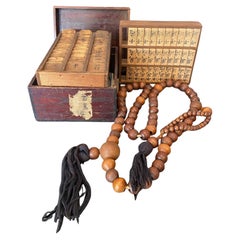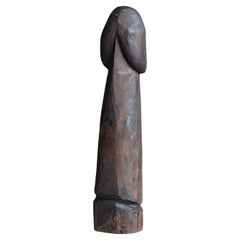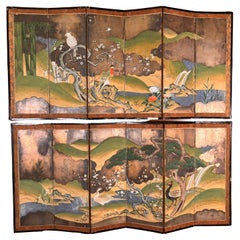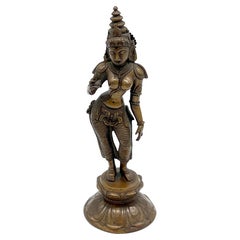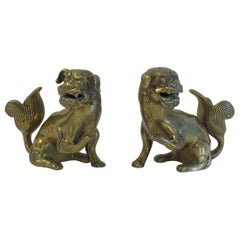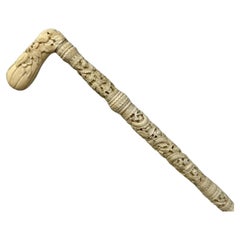19th Century Sculptures and Carvings
Japanese Edo Antique 19th Century Sculptures and Carvings
Wood
Japanese Edo Antique 19th Century Sculptures and Carvings
Cedar
Japanese Meiji Antique 19th Century Sculptures and Carvings
Wood, Paper
Indian Antique 19th Century Sculptures and Carvings
Bronze
Chinese Qing Antique 19th Century Sculptures and Carvings
Bronze, Metal, Brass
British Victorian Antique 19th Century Sculptures and Carvings
Horn, Ebony
Japanese Edo Antique 19th Century Sculptures and Carvings
Granite
Japanese Edo Antique 19th Century Sculptures and Carvings
Stone
Japanese Edo Antique 19th Century Sculptures and Carvings
Fabric, Wood
Japanese Meiji Antique 19th Century Sculptures and Carvings
Glass
Chinese Qing Antique 19th Century Sculptures and Carvings
Agate
Chinese Victorian Antique 19th Century Sculptures and Carvings
Bone
Japanese Meiji Antique 19th Century Sculptures and Carvings
Bronze
Chinese Qing Antique 19th Century Sculptures and Carvings
Soapstone
Japanese Primitive Antique 19th Century Sculptures and Carvings
Wood
Chinese Qing Antique 19th Century Sculptures and Carvings
Limestone
Japanese Edo Antique 19th Century Sculptures and Carvings
Iron
Japanese Meiji Antique 19th Century Sculptures and Carvings
Bronze, Gold, Sterling Silver, Copper
Japanese Meiji Antique 19th Century Sculptures and Carvings
Ceramic
Chinese Qing Antique 19th Century Sculptures and Carvings
Hardwood
Chinese Tang Antique 19th Century Sculptures and Carvings
Wood
Japanese Edo Antique 19th Century Sculptures and Carvings
Wood
Japanese Edo Antique 19th Century Sculptures and Carvings
Wood, Boxwood
Chinese Other Antique 19th Century Sculptures and Carvings
Jade
Antique 19th Century Sculptures and Carvings
Jade
Japanese Meiji Antique 19th Century Sculptures and Carvings
Limestone
Indian Anglo Raj Antique 19th Century Sculptures and Carvings
Metal
Chinese Qing Antique 19th Century Sculptures and Carvings
Wood
Asian Antique 19th Century Sculptures and Carvings
Bronze
Japanese Meiji Antique 19th Century Sculptures and Carvings
Wood
Japanese Meiji Antique 19th Century Sculptures and Carvings
Cedar
Cambodian Antique 19th Century Sculptures and Carvings
Sandstone
Chinese Qing Antique 19th Century Sculptures and Carvings
Porcelain
Japanese Taisho Antique 19th Century Sculptures and Carvings
Stone
Thai Tibetan Antique 19th Century Sculptures and Carvings
Bronze
South Asian Antique 19th Century Sculptures and Carvings
Bronze
Japanese Meiji Antique 19th Century Sculptures and Carvings
Granite
Chinese Antique 19th Century Sculptures and Carvings
Wood, Giltwood
Victorian Antique 19th Century Sculptures and Carvings
Hardwood
Japanese Meiji Antique 19th Century Sculptures and Carvings
Bone
Chinese Qing Antique 19th Century Sculptures and Carvings
Jade
Chinese Qing Antique 19th Century Sculptures and Carvings
Bronze
Chinese Qing Antique 19th Century Sculptures and Carvings
Lacquer
Japanese Edo Antique 19th Century Sculptures and Carvings
Wood, Lacquer
Japanese Meiji Antique 19th Century Sculptures and Carvings
Gold
Japanese Meiji Antique 19th Century Sculptures and Carvings
Iron
Chinese Qing Antique 19th Century Sculptures and Carvings
Wood
Japanese Edo Antique 19th Century Sculptures and Carvings
Bronze
Japanese Edo Antique 19th Century Sculptures and Carvings
Stone
Chinese Qing Antique 19th Century Sculptures and Carvings
Hardwood
Thai Antique 19th Century Sculptures and Carvings
Bronze
Thai Antique 19th Century Sculptures and Carvings
Bronze
Japanese Meiji Antique 19th Century Sculptures and Carvings
Bronze
Japanese Meiji Antique 19th Century Sculptures and Carvings
Bronze
Japanese Meiji Antique 19th Century Sculptures and Carvings
Bronze
Asian Qing Antique 19th Century Sculptures and Carvings
Bronze
Thai Antique 19th Century Sculptures and Carvings
Bronze
Chinese Chinese Export Antique 19th Century Sculptures and Carvings
Glass, Wood
Thai Other Antique 19th Century Sculptures and Carvings
Teak
Japanese Antique 19th Century Sculptures and Carvings
Bronze
Read More
12 Calming Spaces Inspired by Japanese Design
From cherry-blossom-adorned walls paired with glamorous lighting to wood-paneled ceilings above checkerboard-patterned chairs, these 12 spaces seamlessly blend Eastern and Western aesthetics.
Rodrigo Rivero Lake’s Mexico City Showroom Is a Museum-Worthy Trove of Spanish Colonial and Asian Antiques
The dealer and curator has spent the past 50 years amassing a collection of exceptional art, furniture and architectural elements that trace the cultural influence of the Spanish empire from Europe to the Americas and beyond.
